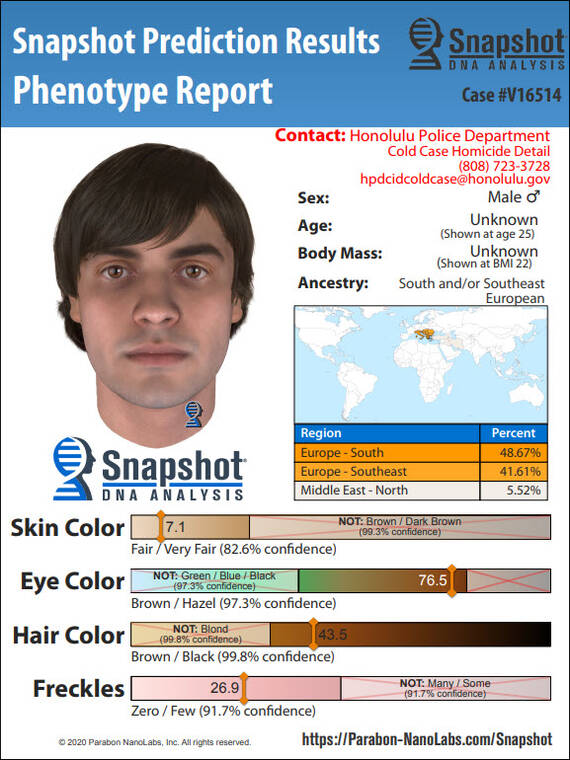DNA analysis leads to arrest in 1972 Waikiki fatal stabbing

COURTESY RENO POLICE DEPARTMENT
Tudor Chirila

COURTESY HPD
This undated image shows Nancy Elaine Anderson who died from multiple stab wounds in her Waikiki apartment in 1972.

COURTESY HPD
Using DNA evidence from this investigation, Parabon NanoLabs produced trait predictions for a person of interest in the Nancy Elaine Anderson fatal stabbing case, Honolulu police said. Individual predictions were made for the subject’s ancestry, eye color, hair color, skin color, freckling, and face shape. By combining these attributes of appearance, a Snapshot composite was produced depicting what the the suspect may have looked like at 25 years old.

COURTESY HPD
Nancy Elaine Anderson was discovered with multiple stab wounds in her apartment at 2222 Aloha Drive in Waikiki on Jan. 7, 1972.





Select an option below to continue reading this premium story.
Already a Honolulu Star-Advertiser subscriber? Log in now to continue reading.